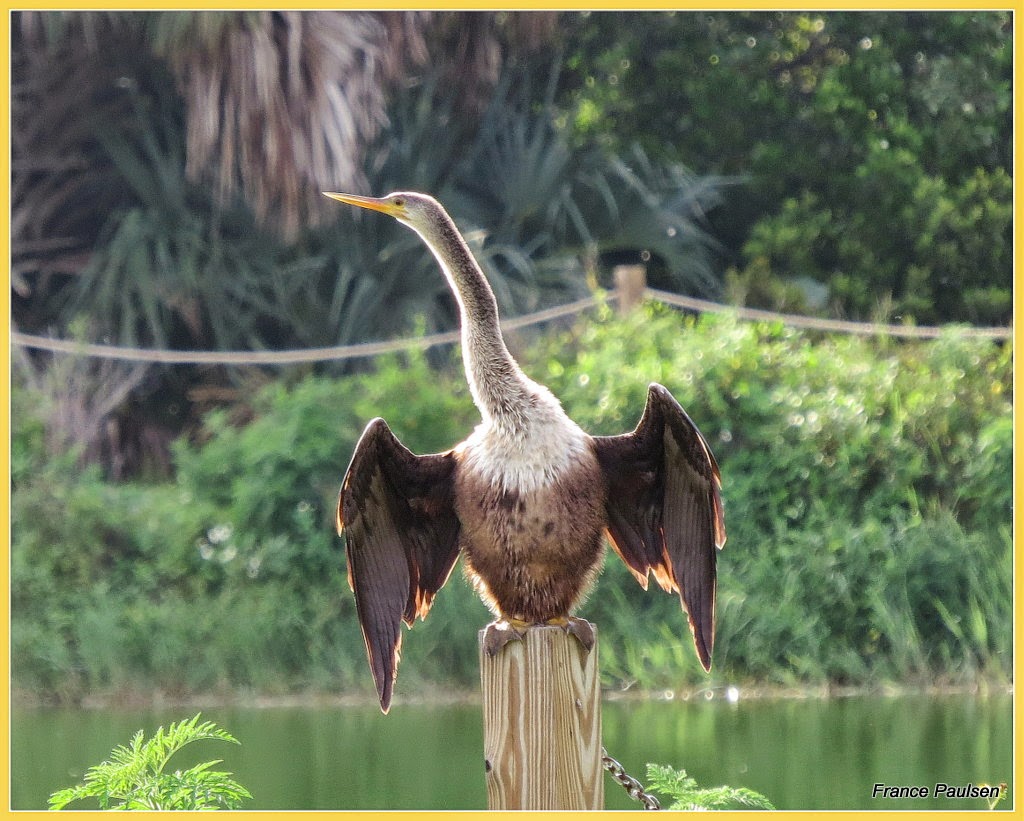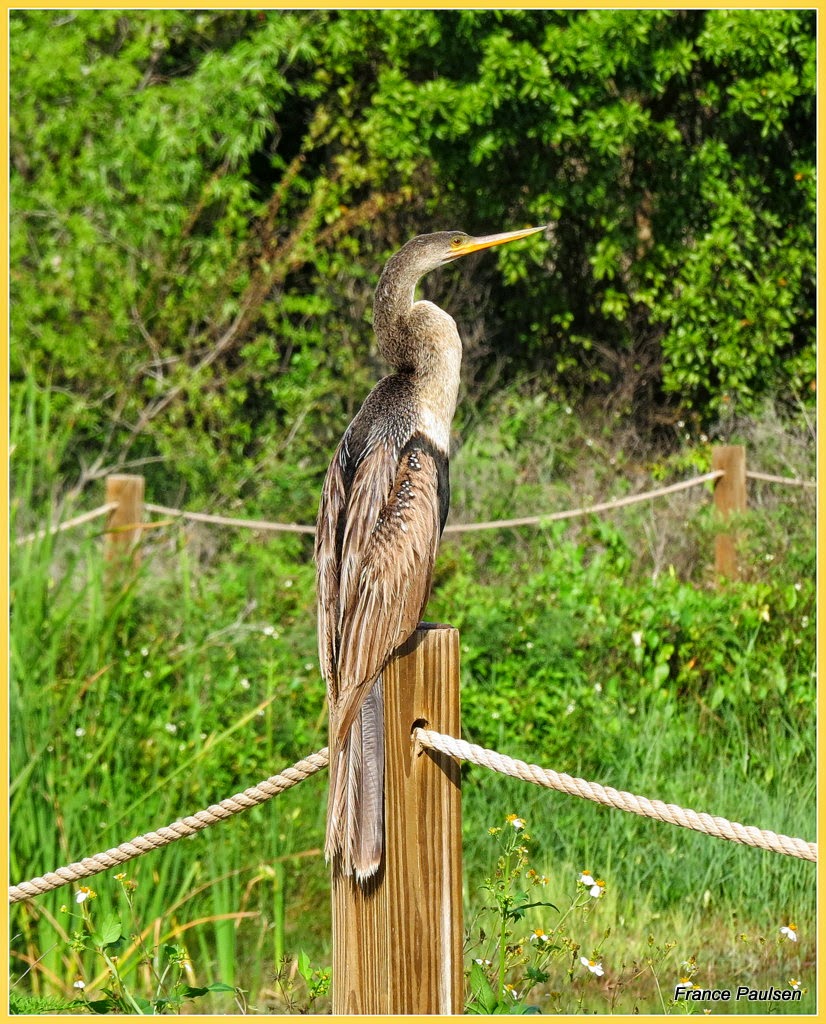I received an e-mail the other day from the Environmental Biologist of the City of Sanibel wanting permission to use my photos during a SanCap Audubon presentation - topic: "Nature Trails" and it reminded me how long it had been since I last visited the Shipley and Pond Apple trails - so, with no further ado....let's go and check it out...
 |
| The Palm Warbler welcomed me with open wings. |
 |
| The retention pond was abuzz with activities - here the Cormorants are drying and resting. |
 |
| Several Killdeers were there as well.... |
 |
| and the Wood Stork too. |
 |
| "Don't you just want to come, have a seat and enjoy the view?" |
 |
| Wood Stork meet Cormorants. |
 |
| Overhead I hear the chatter of an Eagle.... |
 |
| I knew just where to look too, as they have been using this Australian Pine for several years now. |
 |
| Exchanging notes with her mate. |
 |
| As I proceeded down the trail, I spooked a Cooper Hawk deep into the woods. |
 |
| A pretty succulent and spineless plant that blooms and reproduces like there is no tomorrow. |
 |
| A Dove Tree - we have quite a few of those. |
 |
| A Pileated Woodpecker listening for insect movements. |
 |
| The Great Blue Heron kept his distance and eventually flew off when I came around the corner. |
 |
| An immature Anhinga in the forefront and an adult male Anhinga in the background. |
 |
| Here's a close up of the immature Anhinga. |
 |
| The Wood Storks gathered up in the middle island - smart move. |
 |
| The immature Anhinga being curious and watching. |
 |
| The adult male Anhinga - jet black he is. |
 |
| A few White Ibis amongst the Wood Storks. |
 |
| Quite striking, don't you think? |
 |
| Did you notice how sharp that bill is? It is used as a spear for catching fish. |
 |
| Another immature Anhinga. |
 |
| A Gator - half watching me. |
 |
| A female adult Anhinga. |
 |
| The male is all black, the female has a brown neck and black body, the immature is all dull brown. |
 |
| Some Cormorants swimming by. |
 |
| A great stroll through the Sanibel trails. |












That's quite an honor and by looking at the photos I can see why they would want to use them. Great photos with some nice description and information to go along with them.
ReplyDeleteThanks Larry. I'm heading to the lecture in a few and I look forward to see the presentation :)
ReplyDeleteWow!!! You took some great photos of some really amazing birds. I so enjoy looking at your blogs
ReplyDelete